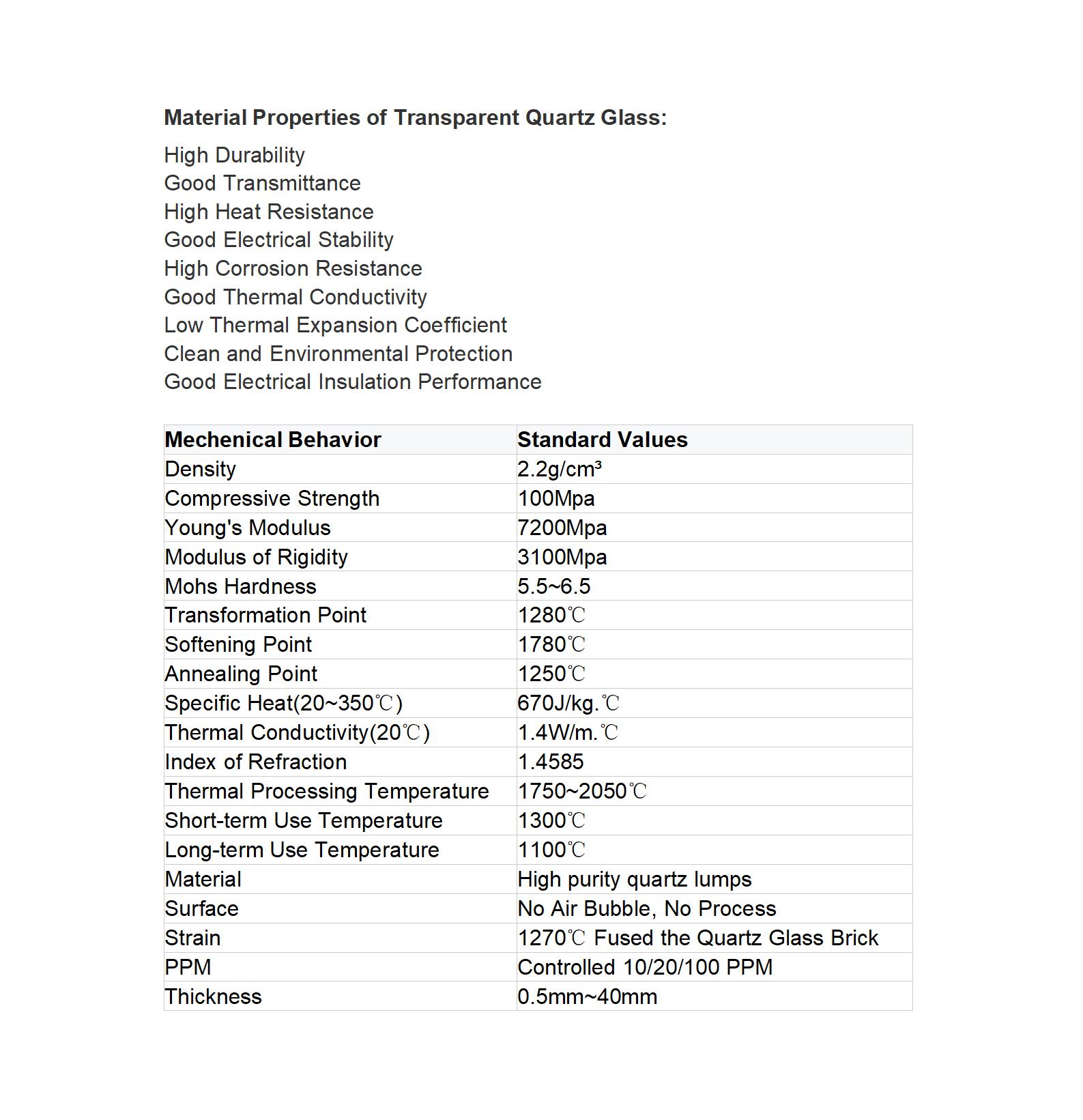T: +86-518-85528012
E: nick@luverrequartz.com
E: nick@luverrequartz.com
1st floor Runlian industrial center No. 116 QuFeng Rd., Haizhou Economic and technological development zone Lianyungang City, Jiangsu Province, China 222062
JGS1/JGS2/JGS3 Fused Silica Transparent Quartz Tube
JGS1, JGS2, and JGS3 are three different types of optically fused silica materials that differ in their spectrum of applications.
Luverre Quartz
99.99%
Inner with Vacuum PVC bag and then wrapped with air bubble film, outer with wooden box.
as per customer's requirement
| Availability: | |
|---|---|
3-300mmJGS1/JGS2/JGS3 fused silica transparent quartz tube
JGS1, JGS2, and JGS3 are three different types of optically fused silica materials that differ in their spectrum of applications.

JGS1 far-ultraviolet optical silica glass: its spectral range is 185 nm to 2500 nm. JGS1 is transparent in the ultraviolet and visible spectral range, without absorption bands in the 185-2500 nm band, but has strong absorption bands in the 2600-2800 nm band.
JGS2 ultraviolet optical silica glass: its spectral range is 220 nm to 2500 nm. JGS2 is also transparent in the ultraviolet and visible spectral range, but also has a strong absorption band in the 2600-2800 nm band.
JGS3 infrared optical quartz glass: its spectral range is 260 nm to 3500 nm. JGS3 is also used in visible quartz glass, but has better performance in the infrared spectral range.

These three quartz glasses are classified and graded in optical components according to quality indicators such as spectral characteristics, optical uniformity, birefringence, stripes, particle inhomogeneity, bubbles and fluorescence characteristics. These materials are commonly used in optical applications that require high transparency and specific spectral properties.
3-300mmJGS1/JGS2/JGS3 fused silica transparent quartz tube
JGS1, JGS2, and JGS3 are three different types of optically fused silica materials that differ in their spectrum of applications.

JGS1 far-ultraviolet optical silica glass: its spectral range is 185 nm to 2500 nm. JGS1 is transparent in the ultraviolet and visible spectral range, without absorption bands in the 185-2500 nm band, but has strong absorption bands in the 2600-2800 nm band.
JGS2 ultraviolet optical silica glass: its spectral range is 220 nm to 2500 nm. JGS2 is also transparent in the ultraviolet and visible spectral range, but also has a strong absorption band in the 2600-2800 nm band.
JGS3 infrared optical quartz glass: its spectral range is 260 nm to 3500 nm. JGS3 is also used in visible quartz glass, but has better performance in the infrared spectral range.

These three quartz glasses are classified and graded in optical components according to quality indicators such as spectral characteristics, optical uniformity, birefringence, stripes, particle inhomogeneity, bubbles and fluorescence characteristics. These materials are commonly used in optical applications that require high transparency and specific spectral properties.